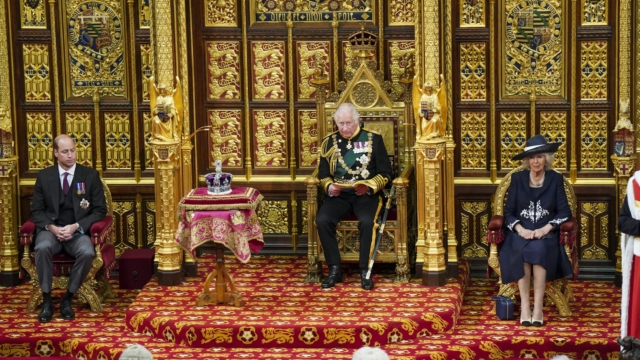Attached a copy of the lobby pack that supports the Queen’s speech. Here are some…
COVID-19 Update 27th November 2020
- Postcode Checker
The Government has launched the online Tier level Postcode Checker so that customers can check the restrictions that apply in any destination that they are travelling to and businesses can check where customers are coming from.
https://www.gov.uk/find-coronavirus-local-restrictions
- Transmission Risk in the Hospitality Sector
The Government has published a short policy paper that seeks to explain why the Government considers hospitality businesses to be higher risk locations for the spread of coronavirus. The Government’s view is that
-
- Higher risk contacts are those that are close, prolonged, indoors, face-to-face, in poorly ventilated and/or crowded spaces, or involve “loud” activities. These are all prevalent in the hospitality sector
- The general picture in the UK (and overseas) is that it has only been possible to get R consistently below 1 in places where there have been substantial restrictions on hospitality.
- An analysis of 3,184 cases in Japan identified 61 case-clusters that were observed in healthcare and other care facilities, restaurants and bars, workplaces, and music events. The largest clusters in Hong Kong were associated with transmission in bars and at a wedding dinner, both locations in which face masks were not worn. At least 246 cases of coronavirus disease (COVID-19) have been linked to nightclubs in Seoul.
- A report from the US CDC found that those infected with SARS-CoV-2 without known close contact with a person with confirmed COVID-19, case-patients were 2.8x more likely to report dining at a restaurant (aOR = 2.8, 95% CI = 1.9–4.3) or 3.9x more likely to report going to a bar/coffee shop (aOR = 3.9, 95% CI = 1.5–10.1) than were control participants.
Suffice to say that a policy paper the seeks to justify the closure of restaurants and pubs in the UK on the basis of infections in nightclubs in Korea and doesn’t discuss what, if any, mitigation regimes (social distancing, cleaning, mask wearing etc) were in place when the infections occurred in these countries, leaves itself open to criticism.
- Test To Release Guidance
The Government has published the guidance to go with the announcement of the new Test To Release scheme that was announced with the publication of the Global Travel Taskforce Report and comes into effect on 15th December for people entering the UK from a non-Air Corridor country. The scheme is voluntary but allows people using it to reduce their quarantine period from 14 days to 5 days. The key features of this are:
-
- The person should book a test with a private test provider before entering the UK – a list of private test providers will be published on GOV.UK soon
- They should then enter the details on the test on their passenger locator form so that they are processed on entry into the UK
- They can decide to take part in the scheme after arriving in England, will need to complete another passenger locator form to do so
- The test is to be taken at least 5 full days after person was in country/territory that is not on the travel corridor list.
- If the test is negative, the person can stop quarantine
- If the test is positive, the person has to stay in quarantine for another 10 days
https://www.gov.uk/guidance/coronavirus-covid-19-test-to-release-for-international-travel
- Heritage Location Guidance Updated
The Primary guidance for Heritage Locations on Working Safely During Coronavirus has been updates in line with the new restrictions that come into force on 2nd December and apply to the different Tier levels.
-
- In Tiers 1 & 2 indoor and outdoor heritage sites can open to the public, subject to the relevant social contact rules. As heritage buildings and landscapes can be used for a multitude of different activities, organisations must check if individual activities are permitted under the rules in their respective tier. This includes caps on attendance at large indoor and outdoor events, where applicable.
- In Tier 3, indoor heritage attractions will be required to close. Outdoor heritage locations including historic parks, gardens, landscapes, and ruins and monuments open to the elements, can remain open as long as the social distancing rules are observed. In tier 3, such outdoor sites are subject to the rule of 6, whether you pay to access them or not (as public outdoor spaces similar to public parks).
https://www.gov.uk/guidance/working-safely-during-coronavirus-covid-19/heritage-locations
- Good to Go Review
VisitBritain is reviewing the Good to Go scheme which is due to finish at the end of the year to ascertain whether the scheme should continue into 2021 and whether doing so would help the tourism recovery. If you have any views on how beneficial it would be to retain the scheme during 2021, please let me know and we can feed this back to Visitbritain.
- SEISS Extension Seminar
HMRC is holding a seminar of the extension to the Self Employment Income Support Scheme on 1, 3 and 8 December. If you are interested, you can register on the following link
https://register.gotowebinar.com/rt/4529107608840804367?source=November-HMRC-GOV
- R Number
We’ll end the week with some good news. The latest R number and growth rate figures for the UK are 0.9-1.0 and -2% to 0% respectively, meaning that it’s the first time since the beginning of August that the growth rate has been negative.


